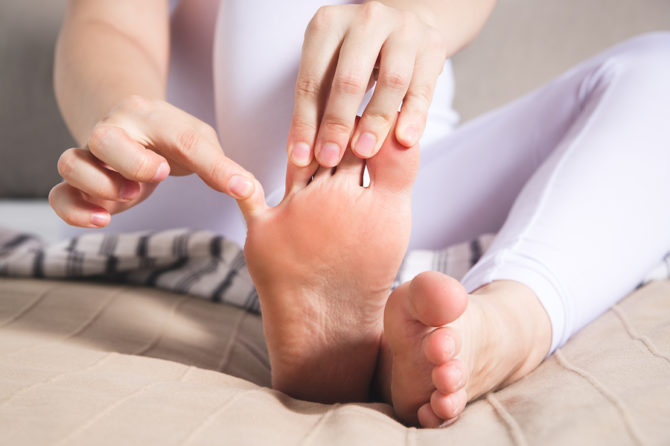
Kissing Corns – What, Where, Why?
There are many types of corns: white corn, Indian corn, popcorn, candy corn–and, of course, foot corns. That last one isn’t exactly a popular option, but they occur nonetheless. One type of corn that can develop is called a “kissing corn.” This is a type of soft corn (heloma molles), meaning it develops in between the toes because of a bone abnormality.
Your bones are shaped like an hourglass, getting smaller in the middle and wider at the ends. When the ends of your bones are wider than average, they may rub together, causing friction and result in corns. This most often happens between the fourth and fifth (pinky) toes.
While it typically occurs in people with bone abnormalities, kissing corns can also result from wearing tight shoes that squeeze the toes together. This could be a specialty athletic shoe (like climbing or ballet shoes), a pair of pointed-toed high heels, or just a basic shoe that happens to be too small. Anything that presses your toes together can lead to a soft corn.
A corn is a thick buildup of skin resulting from friction. A soft corn is essentially the same, but due to its positioning, the skin remains thinner and partially moist due to sweat between toes. This gives it a spongy texture. Most often it will be whitish but can also be yellow.
For most people, the only symptom of a corn is discomfort and pain, but if you leave it alone, the corn can become an open sore and become infected. This can be particularly dangerous for diabetic patients.
Treatment goals include controlling pain and reducing corn size. There are both conservative and surgical solutions for kissing corns. The non-surgical option includes shaving down the corn and using pads and wide shoes to reduce rubbing and allow healing. Surgical solutions are recommended for people with bone abnormalities whose corns will reoccur if the underlying problem isn’t corrected. During the surgery, the inside ends of the bones are shaved down to eliminate touching of the toes.
If you are suffering from kissing corns, a solution is in sight. Call the FAAWC today to discuss your options.
